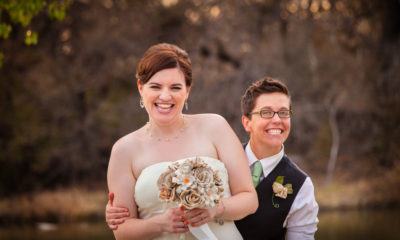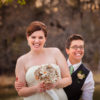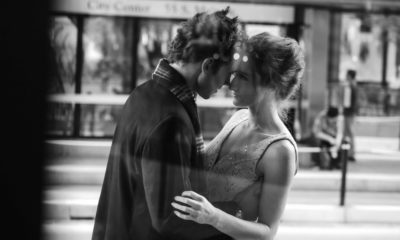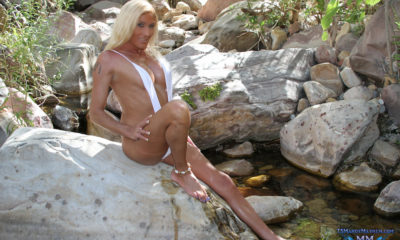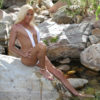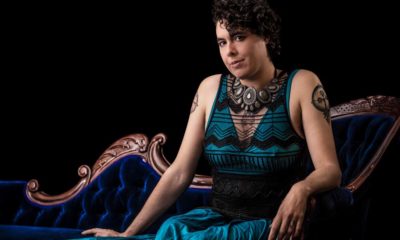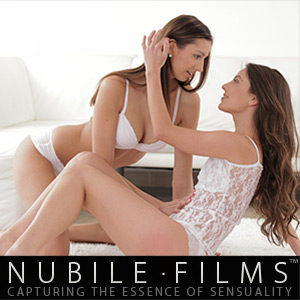LGBTQ
No Wedding For Me!!!!
In Normandy some years later, I attended a three-day wedding celebration arranged by my friend Pamela’s parents in Boston. Complicated arrangements including transatlantic flights and hotel reservations were made months in advance. During the event, there was a series of endless lunches and dinners, enormous quantities of cider, wine, and Calvados, plus another horse-and-carriage procession, enhanced with the presence of a phalanx of liveried musicians playing hunting horns at the entrance to the country chapel in which the ceremony was to be held. Pamela’s wedding was followed by an al fresco luncheon for the entire village, on the grounds of the church. In Bali, I was invited to a wedding where the bride, groom and their families and guests all wore sarongs, because not to do so would have been a mark of disrespect. That, I found, was a dramatic difference from wedding attire. Many years later I attended my first gay wedding. Both of the grooms, Alan and Jeffrey were Jewish, the ceremony took place outdoors, in an elegant country setting under a traditional huppah, members of both families were present, as was a rabbi for each of the grooms, and the wedding was remarkably traditional. The event was catered, pink cloths graced the tables, and everyone enjoyed full bars, music, and dancing. It was not so different from a bar mitzvah, but a lot more fun. The fellow I was living with at the time sat with someone else during the ceremony, got drunk at the party, and embarrassed me beyond description.
All in all, weddings were not my favorite things, and not only because I thought I would never have one. In 1999, however, everything changed. I had the good fortune to get involved with a fellow whom I had known for almost twenty years. When I first met Thom, he was twenty and I was forty-two. There was an instant spark, and we remained friends ever since. In the meantime, Thom and I lived on opposite coasts and went through several long-term relationships. In 1999, we both found ourselves single and to cut the story short, decided to become an item. We have been living together since, quite happily and comfortably, because we both really like each other and, I believe most importantly, because there is no issue about trust. We have been friends for so long we have no secrets and no problem communicating. We trust each other completely, we have nothing to hide and can’t pretend we are any different from what we are, so there’s no pretense, no dissimulation, and no foolish gamesmanship. In 2000, we were invited to Vermont on 1 July for a memorial celebration. As we drove from Manhattan north to New Hampshire on June 30th, we listened on the radio to NPR’s story on Vermont’s new law legitimizing civil unions for committed gay and lesbian couples, scheduled to take place for the first time anywhere in the United States on 1 July—the next day. We discussed the issue and decided it would be a good thing for us to do. Then, when we arrived at our hosts’ place in Hanover, NH, there was a big party going on, so we had no opportunity to talk about the subject or get further information. The following morning our hosts, Jon and Darrell, announced: “We’re taking you to our favorite pond for a swim, in Norwich, across the river in Vermont.” So off we went, picnic and dog in tow. In the middle of the pond, I asked Darrell: “So, if one wanted to have a civil union here, what would be necessary?” He replied: “I think you just go to a Town Clerk’s office and fill out the forms.” I then asked: “Is there a Town Clerk in Norwich?” He pulled out his cell phone, dialed a number, and said: “Roxanne, are you there?” She replied in the affirmative, and he told her he had two friends who were interested in a civil union. She informed him that the office was open until noon, and he asked: “What time is it now?” “Eleven thirty-six,” she answered. So we jumped out of the pond, climbed into our cutoffs and t-shirts, drove into Norwich, found the Town Clerk’s office, filled out the forms, and, with the gracious assistance of Roxanne and her colleague in the office, procured the services of a justice of the peace for that very afternoon. We then bought champagne, returned to the pond, finished our picnic and engaged our friends to join us and witness our ceremony.
The justice of the piece, Ernie, lived in a secluded country house, with a manicured yard and a stunning view over Mt. Killington. Ernie was nervous because he had never previously performed a ceremony for two guys. Fortunately, Roxanne and her colleague had given us a sample text, so we had something to begin with, which Ernie found reassuring. One of our friends, Todd, went around the yard and picked two bouquets of wildflowers, one for Thom and one for me. Jon, who is a professional photographer, grabbed my camera and took photographs all during the ceremony. Darrell, meanwhile, kept us all in line. Because this had happened so suddenly, neither of us had been able to find rings, so we decided to use the rings we already had and deal with proper wedding rings later on. The ceremony took place on the lawn, and if you had ever asked me beforehand what my wedding would be like, I’d have told you it would be extremely well-organized, very proper, with everyone dressed up, special music, and excellent food and wine. What actually happened was an impromptu ceremony on the lawn with only three friends present, no music at all, and everyone except Ernie in cutoffs and t-shirts. The sun was shining, birds were singing, everyone was in a festive mood. Our ceremony was simple and remarkably moving. Thom and I clutched our bouquets of wildflowers, and when the words were concluded, everybody kissed everybody else, except for Ernie, who was still unaccustomed to the idea. We did not promise to “honor” or “obey,” but what brought mist to my eyes was hearing myself say: “I Angus, take you Thom to be my spouse in our civil union, to have and to hold from this day on, for better, for worse, for richer, for poorer, to love and to cherish forever,” and to hear Thom say the same things to me. Odd as it once may have seemed, I knew in the depths of my heart it was true. San Francisco, September, 2000. P.S. Thom likes to describe himself as a “serial nuptualist,” and, since the year 2000, the world has changed significantly. It is now legal for gay and lesbian couples to marry in Holland, Belgium, Spain, New Zealand, and Canada. In 2003, we were married in Toronto, a civil service recognized as legal except in the United States. Last week, we were married once again, in our own home city of San Francisco, given that the State of California has allowed legal gay and lesbian weddings since June of this year.
San Francisco, September, 2008
P.P.S Things have changed rapidly since 2008, and now, according to Wikipedia:
“Same-sex marriage is legally recognized in some jurisdictions within the United States and by the federal government. Nineteen states[a] and the District of Columbia have legalized same-sex marriage. Eight Native American tribal jurisdictions[b] issue marriage licenses for same-sex couples. Limited recognition has been granted to out-of-state same-sex marriages in Alaska,[2] Colorado,[3] Missouri,[4] and Ohio.[5] Several hundreds to thousands of marriage licenses were issued to same-sex couples in Utah, Michigan, Arkansas,and Wisconsin before their rulings were stayed.
Since the U.S. Supreme Court struck down the law barring federal recognition of same-sex marriage in United States v. Windsor[6][7] on June 26, 2013, U.S. district courts in Utah,[8] Oklahoma,[9] Kentucky,[10] Virginia,[11] Texas,[12] Michigan,[13] Ohio,[14] Idaho,[15] Oregon,[16] Pennsylvania,[17] and Wisconsin,[18] and state courts in Arkansas[19] and Texas,[20] have found state constitutional amendments or statutes banning same-sex marriage to violate the Constitution of the United States. The Kentucky and Ohio decisions order only state recognition of out-of-state same-sex marriages; the other decisions strike down the entire ban on performing or recognizing same-sex marriages. Except for those in Oregon and Pennsylvania, all rulings have been stayed pending appeal. Meanwhile, U.S. district courts in Tennessee and Indiana have issued rulings forcing the respective states to temporarily recognize the out-of-state same-sex marriages of the plaintiff couples while their case is pending, in the former case, or of a couple where one partner is terminally ill, in the latter case. These decisions, too, have been appealed and ordered stayed.[21][22] While many jurisdictions have legalized same-sex marriage through court rulings, legislative action, and popular vote, three states prohibit same-sex marriage by statute and 28 prohibit it in their constitutions.[23] Section 2 of the Defense of Marriage Act (DOMA), enacted in 1996, allows states to refuse to recognize same-sex marriages performed under the laws of other states. The movement to obtain civil marriage rights and benefits for same-sex couples in the United States began in the 1970s,[24] but became more prominent in American politics in 1993 when the Hawaii Supreme Court declared the state’s prohibition to be unconstitutional in Baehr v. Lewin.[25] On May 17, 2004, Massachusetts became the first U.S. state and the sixth jurisdiction in the world to legalize same-sex marriage following the Supreme Judicial Court’s decision in Goodridge v. Department of Public Health six months earlier.[26] During the 21st century, public support for same-sex marriage has grown considerably,[27][28] and national polls conducted since 2011 show that a majority of Americans support legalizing it. On May 9, 2012, Barack Obama became the first sitting U.S. President to publicly declare support for the legalization of same-sex marriage.[29] On November 6, 2012, Maine, Maryland, and Washington became the first states to legalize same-sex marriage through popular vote.”
Image courtesy of Shutterstock
Join SimplySxy’s forum discussions now on Society
Do not miss another article on SimplySxy! Follow us on Facebook and Twitter for our latest updates!
A native Californian, Angus Whyte first lived in San Francisco in the mid-sixties following his graduation from U.C. Berkeley. After graduate school at the University of Washington, with a Master's degree in French and Music, he was awarded a Fulbright Teaching Scholarship to France, later contracted with the U.S. State Department to teach mobile cinema in the Congo Republic, and subsequently studied baroque music and harpsichord at the Amsterdam Conservatory and the Salzburg Mozarteum Academy. From 1973 through 1981 he operated the Angus Whyte Gallery in Boston, Provincetown, New York City, and Washington, DC. After completing the Institute of Arts Administration program at Harvard, he served as Director of Special Events at Art Center College of Design in Pasadena from 1983 until 1990, during which time he was active on the boards of the Brody Arts Foundation, Pacific Serenades, and the California Confederation of the Arts. Following a sabbatical in France from 1990 through 1993, where he renovated ancient stone buildings in Périgord, southwestern central France, Whyte returned to San Francisco, where he served as development consultant to the the capital campaign of the LGBT Community Center Project. From 1997 through 2012 he directed a philanthropic organization, Art for Healing, whose mission was to collect and place original works of art in hospitals and healthcare facilities.
Married several times to thomas grexa phillips, his book of memoirs "After-Dinner Tales" was published in 2013, and presently he is working on his next book of stories.







